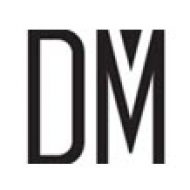About
What We Do
Problem Space
Turnover
Lack of Continuity
Inconsistent Delivery Flow
Solution Vectors
What is a Center of Excellence?
One modern label of a Center of Excellence is an ART (agile release train). An ART is often a virtual unit within an organization responsible for coordinating across domains and iterations to deliver continuous value.
A more traditional label of a center of excellence is referred to as a PMO. The “P” can stand for any one of the 4 P’s, (i.e. project, product, program or portfolio). We most often recommend establishing: a Portfolio Management Office.
How does a center of excellence mitigate this problem space?
Like technical folks, functional team members also tend to seek other opportunities and become turnover statistics when reporting to under-qualified departmental, operational or technical management.
Establishing a center of excellence can reduce turnover by providing the organizational hub for functional career paths and culture.
What is a Cross-Functional Matrix?
Many of our clients are organized as a departmental or functional hierarchy at the outset of our engagements. In this scenario, product development and project-based work is overseen by leadership within a department, such that product owners/project managers report up to directors, who report up to the department’s VP, and so on. In these scenarios, product development and project management is done differently in each department, per the preference of leadership in that area and based on their respective expertise in overseeing development work.
In a cross-functional matrix, product owners and project managers report up to one center of excellence (often, a PMO), which enables the centralization of standards for how product development and project management is done across the organization.
How does a matrix mitigate this problem space?
What do you mean by “balance” between tech and functional?
How does balance mitigate this problem space?
What do you mean by “balance” between Ops and Dev?
How can we mitigate this problem space?
What do you mean by “balance” between tactical and strategic?
How does balance mitigate this problem space?
Balancing tactical and strategic realms can directly mitigate burn-out and turnover of departmental leadership.
What is a recruiting process that is consistent with culture, mission and values?
How does a recruiting process mitigate this problem space?
Our Approach
Our Experience
To become adept at organizational development, we believe it is important to possess experience with many organizations, and among the many areas within an organization, and across many industries. Our unique journey that took unexpected turns has organically resulted in the broad resume you would expect from an organizational development firm.
Below is a timeline of our journey that featured a wide breadth of experience across the technology and small-medium business sectors.
As four friends who had all attended the University of Arizona together, we decided to join up and form a technology company focused on niche products and services for small and medium businesses.
Two of the four partners had been doing web development prior to joining with the whole. This expertise and initial client base was contributed to the founding of D'Mention Systems. Our unique niche was websites that featured animation and 3D environments to help small businesses self-identify and stand out in establishing their brands and organizational missions. At our peak, we hosted over 400 web domains on a combination of PHP-based platforms including WordPress and Drupal along with deep customizations framed in CakePHP and Zend. Customer-base targets included entrepreneurs initiating sole proprietorships and partnerships.
Designed, developed and offered an accounting system serving specialized financial market needs including automotive dealerships, which require complex features like accounts receivable terms with amortization (a.k.a. buy-here-pay-here), and netting accruals for wholesale transactions. Product offerings included the software systems bundled with professional services to provide white-glove support for back-office accounting and finance users. Customer-base targets included small businesses with 1-30 employees.
We truly became a full service provider to our line-of-business customers when we could develop and host their website, provide their accounting and business software, and now--maintain their infrastructure. We enrolled in several infrastructure partner programs including Microsoft and Sophos and provided managed services and support as a stand-alone as well as bundled with our entire boutique of offerings.
The financial crisis of 2008 had a direct and negative impact on our small business client base that utilized our website division and our accounting products. In many cases, many of our clients closed up shop, causing us to pivot our focus to medium businesses between 2008 and 2009.
With 2008 pushing us to pivot to medium-sized organizations, we began 2009 with a focus on winning projects with medium businesses and from RFPs at universities, corporations and government entities. This organically forced us to approach software development agilely, and with that - to help our customers learn to approach projects more agilely. Over time, this helped us to ascend from development project managers into consultants who assisted customers in evolving and restructuring various facets of their IT organizations including infrastructure, technical/functional staffing, org structure and the formation of project management offices (PMOs).
In 2011, we began to evolve into the consultancy we are today. Since then, our engagements have taken a variety of forms including accomplishments in staff augmentations and employment stints followed by organizational changes to: build out PMOs, evolve agile development methods, overhaul shop tools used throughout the SDLC, implement agile project frameworks, clean up technical debt, restructure, author system security plans and assist with recruiting and retaining top dev team talent.
In 2021 we began sharing our experience through social media and blog articles. We are as passionate today as we were when we set out in 2003, about helping small and medium businesses in the IT space with our breadth of experience. We thank our customers for having allowed us to be part of their journey, and we credit them for our experience.
